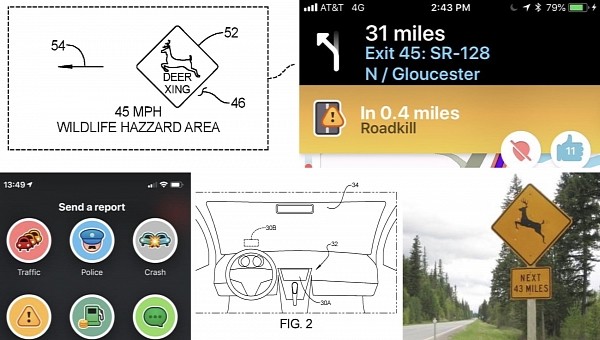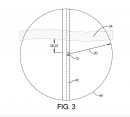General Motors is envisioning a new system to prevent and reduce wildlife roadkill. One of the proposed approaches relies on a system similar to the one used by navigation apps, letting motorists exchange information that would eventually help avoid a collision.
If you’re familiar with the crowdsourcing engine that powers Waze, you can figure out where this is going. One of the scenarios that General Motors is exploring is an alert system that would allow drivers on the road to exchange information, essentially allowing each other to know when wildlife activity has been spotted in a specific region.
The American auto manufacturer wants its warning model to be based on a more complex set of features.
Before anything else, the company’s new system relies on GPS data to determine the location of the vehicle. If the car is located in a region known for wildlife activity, the driver could end up seeing a warning, similar to those displayed by Waze.
The more important part is how the wildlife activity warning is generated. General Motors says the systems installed on cars could receive data from a wide variety of sources, including an online server that’s periodically updated with such information. Servers could process data such as historical wildlife position and migration habits, trying to determine the distance from the moving vehicle.
Whenever the user is approaching a region with an increased likelihood of vehicle-animal collisions, the warnings are generated to give drivers more time to reduce the speed and react accordingly if an animal crosses the road.
In some cases, the warnings could be based on historical data, but in more complex implementations, drivers could be alerted by other motorists on the road, with the information required for the alert transferred when the vehicles pass each other.
In addition to the traffic signs that warn of the presence of wildlife, drivers can also rely on Waze notifications powered by its crowdsourcing engine. The navigation app uses an approach similar to the one that General Motors employs for its new technology, allowing drivers to report traffic incidents and let others know what they could come across in advance. This concept has proved extremely efficient until now, eventually making Waze a leading navigation app in the mobile space.
Waze enables users to report not only roadkill, but also nearby animals, while GM’s idea is centered around an automatic system that wouldn’t involve input from the user.
While GM's new proposal could make roads safer, the new technology is still in the patent stage. This means the new feature may or may not make its way to vehicles, but given it’s still in its very early days, you’d better not hold your breath for such a built-in system.
The American auto manufacturer wants its warning model to be based on a more complex set of features.
Before anything else, the company’s new system relies on GPS data to determine the location of the vehicle. If the car is located in a region known for wildlife activity, the driver could end up seeing a warning, similar to those displayed by Waze.
The more important part is how the wildlife activity warning is generated. General Motors says the systems installed on cars could receive data from a wide variety of sources, including an online server that’s periodically updated with such information. Servers could process data such as historical wildlife position and migration habits, trying to determine the distance from the moving vehicle.
Whenever the user is approaching a region with an increased likelihood of vehicle-animal collisions, the warnings are generated to give drivers more time to reduce the speed and react accordingly if an animal crosses the road.
In some cases, the warnings could be based on historical data, but in more complex implementations, drivers could be alerted by other motorists on the road, with the information required for the alert transferred when the vehicles pass each other.
In addition to the traffic signs that warn of the presence of wildlife, drivers can also rely on Waze notifications powered by its crowdsourcing engine. The navigation app uses an approach similar to the one that General Motors employs for its new technology, allowing drivers to report traffic incidents and let others know what they could come across in advance. This concept has proved extremely efficient until now, eventually making Waze a leading navigation app in the mobile space.
Waze enables users to report not only roadkill, but also nearby animals, while GM’s idea is centered around an automatic system that wouldn’t involve input from the user.
While GM's new proposal could make roads safer, the new technology is still in the patent stage. This means the new feature may or may not make its way to vehicles, but given it’s still in its very early days, you’d better not hold your breath for such a built-in system.






